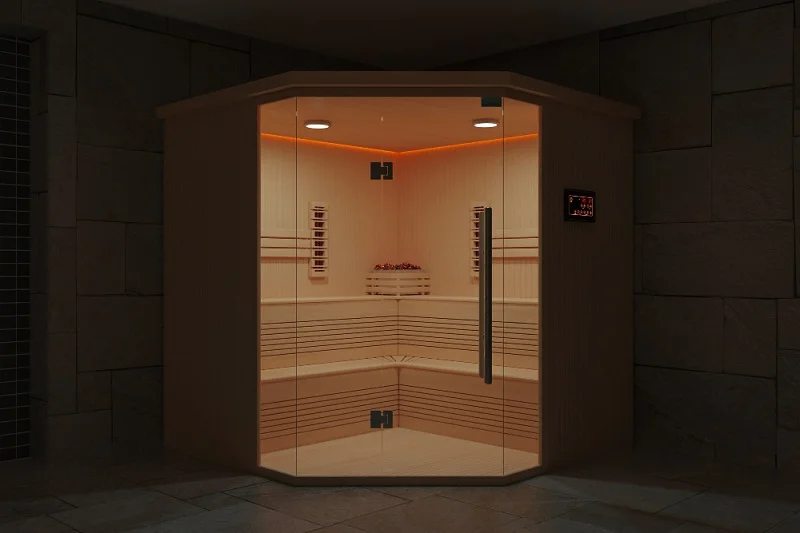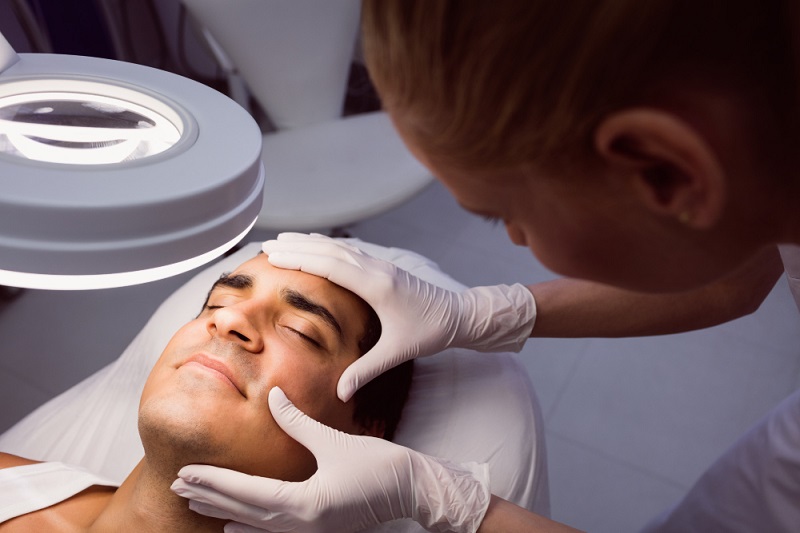Cryotherapy, also known as an ice bath or cold water immersion, is a treatment method that involves immersing the body in a cryotherapy machine with extremely low temperatures or using cold packs and ice packs. There are several types of cryotherapy techniques employed for therapeutic purposes.
Although studies have shown that cryotherapy can provide relief for specific conditions and aid in recovery, evidence regarding its effectiveness is still limited. While cryotherapy is generally considered safe, people should know some contradictions and potential side effects before trying the procedure.
Research has shown that cryotherapy, which includes cold packs, ice packs, and even ice baths, can provide therapeutic benefits for various conditions such as inflammation, pain, and anxiety.
The treatment works by reducing blood flow to a specific body area, which can help alleviate symptoms. However, it’s important to note that more research is needed to fully understand how cryotherapy works and whether it’s effective for all conditions.
When considering cryotherapy or using cold water or ice for therapeutic benefits, it’s also important to be aware of potential side effects and contradictions. Some people may experience skin reactions such as redness or irritation after the procedure, while others may experience dizziness or lightheadedness due to the sudden drop in temperature. It’s also important to note that cryotherapy can lead to cold panniculitis, a condition where the skin becomes inflamed due to prolonged exposure to cold temperatures.
It’s also worth noting that cryotherapy is a procedure that involves exposing the skin to extremely low temperatures using ice. Some individuals should avoid this treatment method, including people with heart conditions or high blood pressure, who should consult their dermatologist before the procedure. Pregnant women and children under 18 should not try cryotherapy due to the potential risks associated with exposure to such extreme temperatures.
While some people may be eager to try this new treatment method, it’s essential to approach the ice therapy procedure cautiously. Cryotherapy should only be done under the supervision of a trained professional who can ensure that safety guidelines are followed. Extensive research has shown that this procedure can effectively treat various skin conditions.
What Is Whole Body Cryotherapy?
Whole Body Cryotherapy: An Overview
Whole-body cryotherapy treatments involve exposing the body to freezing temperatures in an ice-filled chamber for a short period. This WBC treatment is often used to reduce inflammation, improve circulation, and promote the healing of skin conditions. However, it is essential to note that this therapy has some downsides. Whole-body cryotherapy (WBC) treatments involve stepping into a specialized chamber where your body is exposed to temperatures ranging from -110°C to -140°C for 2-4 minutes. Unlike an ice bath or water immersion, WBC only exposes the body to cold air, which can be more comfortable for some people. Research has shown that WBC can increase oxygen flow, providing numerous health benefits. Liquid nitrogen is often used, especially whole-body cryotherapy!
What Does Whole-Body Cryotherapy Claim To Treat?
Proponents of whole-body cryotherapy claim that it can help with various conditions, such as muscle soreness, inflammation, joint pain, depression, anxiety, and even weight loss. The theory behind this treatment is that the extreme cold in an ice-filled chamber causes blood vessels in the skin’s surface and muscle tissues to constrict, which helps reduce inflammation and allows more oxygenated blood circulation throughout the body. WBC sessions are usually monitored to ensure safety.
While there have been some studies on the benefits of whole-body cryotherapy (WBC) treatments, there needs to be more scientific evidence yet to support many of these claims. However, some athletes swear by this treatment for faster recovery after intense workouts, as it involves exposing the body to sub-zero temperatures using ice, which is said to increase oxygen flow. It’s essential to monitor the duration of WBC sessions to avoid any potential risks.
The Downsides Of Whole Body Cryotherapy Treatment
While whole-body cryotherapy (WBC) has been shown to have some benefits, like positive inflammatory response and improved circulation, it is essential to monitor the treatment closely. If done incorrectly or without proper medical supervision, it can be dangerous and lead to potential risks such as frostbite, burns from improper use of equipment, prolonged exposure times leading to hypothermia, and a decrease in oxygen levels due to the use of ice.
Since whole-body cryotherapy involves exposure to freezing temperatures and reduces the air’s oxygen, and will affect the internal body temperature and may not be suitable for individuals with certain medical conditions such as WBC disorders. Therefore, it is essential to consult a doctor before trying this ice-cold therapy.
Cryotherapy Safety And Contradictions
Cryotherapy, a treatment that involves exposing the body to freezing temperatures for several minutes, has gained popularity recently for its potential health benefits. However, it is important to note that cryotherapy is unsuitable for everyone.
Generally Safe For Healthy Individuals
Cryotherapy using ice is generally safe for a healthy individual with no medical conditions. The whole-body treatment has been shown to reduce inflammation, alleviate pain, and improve recovery time after exercise or injury by increasing oxygen supply and stimulating white blood cell (WBC) production. However, it is crucial to follow the instructions of a trained professional when undergoing cryotherapy.
People With Certain Medical Conditions Should Avoid Cryotherapy
Individuals with certain medical conditions should avoid whole-body cryotherapy as exposure to extreme ice cold can exacerbate their condition. People with Raynaud’s disease, cold urticaria, or other cold-related conditions should avoid cryotherapy as it can trigger symptoms such as skin discoloration or hives.
People with heart conditions or high blood pressure should consult their doctor before cryotherapy to ensure their oxygen levels are stable. Additionally, the WBC count should be monitored for those who experience frequent cryotherapy sessions.
Cryotherapy Can Cause Skin Burns And Frostbite
While cryotherapy can be beneficial when done correctly, it can also cause injuries if not performed correctly. Exposure to freezing temperatures can cause skin burns and frostbite if the skin is not adequately protected during treatment. It is essential to follow the instructions of a trained professional and wear protective clothing during treatment. Cryotherapy involves exposing the whole body to ice-cold temperatures, which can increase oxygen levels.
Pregnant Women And Children Should Not Undergo Cryotherapy
Cryotherapy, a treatment that involves exposing the body to freezing temperatures for several minutes, has gained popularity recently for its potential health benefits. However, it is important to note that cryotherapy is unsuitable for everyone.
Indications And Contraindications For Cryotherapy
Cryotherapy is a popular treatment many athletes and individuals use to reduce inflammation, pain, and muscle soreness. However, not everyone can benefit from cryotherapy due to certain medical conditions that may make it unsafe or ineffective. Cryotherapy may affect the oxygen supply to the body and the count of white blood cells (WBC). In this section, we will discuss the contraindications and indications for cryotherapy.
Cold Panniculitis
One of the most severe side effects of cryotherapy is cold panniculitis. This condition occurs when the skin and underlying tissues are exposed to extremely cold temperatures, leading to skin damage and inflammation. Cold panniculitis is a rare but severe complication that can occur in patients with pre-existing medical conditions such as Raynaud’s disease or lupus. Individuals with these conditions should avoid cryotherapy as it may exacerbate their symptoms. Cryotherapy may also affect the levels of WBC and oxygen in the body, which may impact overall health.
Rheumatoid Arthritis
Another medical condition contraindicated for cryotherapy is rheumatoid arthritis (RA). RA is an autoimmune disorder that causes joint inflammation, pain, and stiffness. Cryotherapy can increase joint pain and cause further damage to already inflamed joints in RA patients. Therefore, individuals with RA should avoid undergoing cryotherapy as it may reduce the oxygen supply to the affected area.
Indications For Cryotherapy
While certain medical conditions make cryotherapy unsafe, there are also many indications for its use. Cryotherapy can be beneficial for treating acute injuries such as sprains or strains and reducing swelling and inflammation. It can also help alleviate chronic pain caused by osteoarthritis or fibromyalgia. Additionally, cryotherapy has been found to increase oxygen levels in the body, promoting better overall health.
Moreover, athletes often use whole-body cryotherapy as a recovery tool after intense workouts or competitions to reduce exercise-induced muscle damage and promote faster recovery times. Some studies have also shown that cryotherapy may improve mood disorders such as anxiety or depression by releasing endorphins in the body. Additionally, whole-body cryotherapy has been found to increase oxygen levels in the blood and stimulate white blood cell production, which can enhance the body’s natural healing processes.
Potential Hazards Of Cold Water Immersion
Skin Burns: A Potential Hazard Of Cryotherapy
Cryotherapy, also known as cold therapy, is a popular treatment that involves exposing the body to extremely low temperatures for several minutes. While cryotherapy has been shown to have many benefits, including reducing inflammation and pain, it does come with some potential hazards. One of the most significant risks associated with cryotherapy is skin burns. However, cryotherapy can also trigger an increase in oxygen and WBC count.
Skin burns can occur when the skin is exposed to temperatures that are too cold for an extended period. When the skin is exposed to extreme cold, blood vessels constrict, reducing blood flow to the affected area. This can cause tissue damage and even lead to frostbite in severe cases.
Whole-body cryotherapy, a cryotherapy treatment that involves entering cryotherapy chambers, is generally considered safe and can relieve specific conditions. Skin burns can still occur if proper precautions are not taken during cryotherapy sessions, so it is essential to follow safety guidelines and only receive treatment from trained professionals. Skin burns can be painful and may take several weeks or months to heal.
People With Certain Skin Conditions May Be At Higher Risk
While anyone undergoing cryotherapy is at risk of developing skin burns, people with certain skin conditions may be more susceptible than others. For example, individuals with eczema or psoriasis may experience increased sensitivity and irritation when exposed to freezing temperatures. People with previous skin injuries or surgeries may also be at higher risk for adverse effects from cryotherapy.
Risks Can Be Minimized By Following Proper Safety Protocols
Despite the potential hazards associated with cryotherapy, these risks can be minimized by following proper safety protocols. Ensuring the equipment used during cryotherapy sessions is well-maintained and functioning correctly is essential. Technicians should monitor clients closely during sessions and adjust treatment times based on individual responses.
Consulting With A Dermatologist Is Crucial
If you are considering undergoing cryotherapy treatment, it is crucial to consult with a dermatologist beforehand. A dermatologist can evaluate your skin’s condition and determine whether you are a good candidate for this type of therapy. They can also guide how best to prepare your skin before treatment and what steps to take afterward to promote healing and reduce the risk of adverse effects.
Cryotherapy Should Not Be Used As A Substitute For Medical Treatment
While cryotherapy can be an effective treatment for many conditions, it should not be used as a substitute for medical treatment. If you have a skin condition or injury that requires medical attention, it is essential to seek professional care from a qualified healthcare provider. Cryotherapy may be used with other treatments, but it should never replace them partially.
Benefits Of Cryotherapy
Therapeutic Benefits Of Cryotherapy Treatments
Cryotherapy treatments have become increasingly popular, with many people turning to this cold therapy for pain relief and muscle recovery. The process involves exposing the body to frigid temperatures, providing numerous benefits beyond pain relief. We will explore some of the therapeutic benefits of cryotherapy treatments.
Reduced Muscle Pain And Inflammation
One of the most significant benefits of cryotherapy is its ability to reduce muscle pain and inflammation. Cold packs or ice baths have long been used to treat injuries and sore muscles, but cryotherapy further exposes the body to cold temperatures. Studies have shown that exposure to extreme cold can help reduce muscle inflammation, leading to less pain and faster recovery times.
Improved Skin Health
Cryotherapy treatments can also benefit skin health by increasing blood flow and reducing inflammation. This increased blood flow can help deliver vital nutrients and oxygen to the skin cells, promoting healthy skin growth. Cryotherapy has been shown to improve conditions such as eczema and psoriasis by reducing inflammation in affected areas.
Staying Safe With Cryotherapy
In summary, cryotherapy is a treatment that involves exposing the body to freezing temperatures for several minutes. It has been used to treat various conditions, such as inflammation, pain, and muscle soreness. While it may seem like a quick fix for many ailments, it is essential to note that cryotherapy can have potential hazards if not used properly.
To ensure your safety during cryotherapy sessions, it is crucial to understand the indications and contraindications of this treatment. If you have certain medical conditions or are taking specific medications, it may be unsafe to undergo cryotherapy. It’s always best to consult your doctor before undergoing any new treatments.
The potential hazards of cryotherapy on the skin should not be taken lightly. Frostbite and other skin injuries can occur if proper precautions are not taken before and during the session. Protecting sensitive areas such as hands, feet, ears, and nose from extreme cold exposure is necessary.
Despite these potential risks, cryotherapy has many benefits when done safely and correctly. This treatment has improved circulation, boosted metabolism, and reduced inflammation and pain in muscles and joints.






